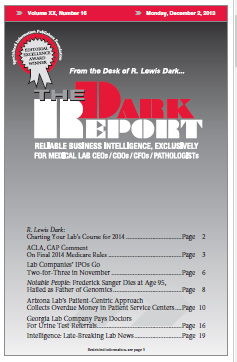EVERY DAY, ACROSS THE GLOBE, labs perform testing using Sanger sequencing and other fundamental techniques of proteomics and genomics pioneered and developed by Frederick Sanger, who died last month at the age of 95. Sanger is considered one of the giants in biochemistry. He was one of only three people awarded two Nobel prizes in …
Frederick Sanger Dies at Age 95, Hailed as Father of Genomics Read More »
To access this post, you must purchase The Dark Report.


